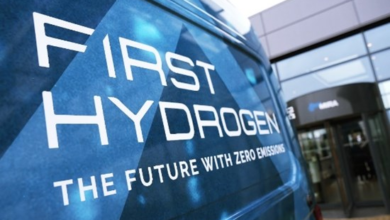Siltrax develops innovative hydrogen fuel cell technology with novel silicon-based fuel cell stack

An innovative form of hydrogen fuel cell technology that makes lighter, more efficient fuel cells has won backing from the CEFC. The US$ 7 million CEFC commitment will help Australian startup Siltrax develop the technology to power a range of heavy-duty and materials-handling vehicles, to help reduce emissions and contribute to Australia’s hydrogen roadmap.
Siltrax’s novel fuel cell technology uses bipolar plates made from silicon rather than the more commonly used graphite or metallic materials, to produce thinner, more efficient plates.
Silicon is a chemically durable material that can withstand high pressure, high temperature, and acidic environments without any degradation. Its use has the potential to reduce costs for fuel cell production and make energy-producing technology more durable, efficient and powerful.
The use of silicon also allows Siltrax to leverage the existing PV supply chain for both raw materials and production equipment.
The Siltrax technology has been developed by Dr Zhengrong Shi and Dr Jim Zhu, who bring extensive experience from their backgrounds in silicon-based materials research. Dr Shi founded Suntech Power, the world’s first GW scale solar foundry, and has deep experience in both technology commercialisation and manufacturing scale-up.
The CEFC investment is managed by Virescent Ventures. It will help Siltrax build out its Australian research and development team to focus on fuel cell systems engineering and local commercialisation opportunities.
Siltrax’s first target market is stationary power generation, where fuel cells generate electricity through a mechanism that, unlike other forms of power generation, does not require combustion.
The Siltrax technology has the potential to be used in the heavy-duty, long-haul trucking sector, enabling range, refuelling time and payload capacity similar to diesel trucks. It also helps reduce emissions in otherwise hard-to-abate areas where current battery technology may not be able to support the range and required duty cycles.
Other later-stage uses for the Siltrax technology may include materials handling vehicles with space constraints like forklifts, those with faster refuelling time requirements, and aerospace applications. The company is also progressing with the development of hydrogen electrolysers utilising the same core technology.
Sara Leong said: “Transitioning to a low emissions economy requires a range of technologies and that’s why the CEFC backs Australia’s climate tech pioneers. Advancing hydrogen fuel cell technology is a critical enabler that will help us develop the hydrogen value chain, as well as accelerate the development of Australia’s hydrogen industry.”
Dr. Zhengrong Shi said: “The PV industry’s growth has been incredible over the past twenty years, as prices have dropped from USD$4-5/W to today’s USD$0.3/W. Siltrax builds upon the foundations of PV and semiconductor manufacturing, and can utilise the existing supply chains, technologies, and talent pool to the fullest.”
